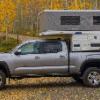During the summer lockdowns I installed a 200w panel, 100/30 victron mppt controller and monitor... And just ordered and installed a 100ah LiFePO4 battery from Canbat (I'm living in BC now).
Happy to hear you went with the Victon 100/30 controller over the 75/15 for future expansion. And also the Battle Born 100 AH LiFePO4. Excellent combination.
Since you anticipate cold weather in your future, I'm assuming that if you just ordered the new battery it was the heated version BB10012H. If you got the non heated (original) version BB10012, like many of us did before the heatd version came out,, then you can still turn it into a heated version by adding their battery heating pad, which wraps around the BB10012 and functions, essentially, the same way as the internal heating element of the BB10012H. If you anticipate temps to drop below 24 degrees F where you travel, it could be a useful accessory. Especially if you are travelling in freezing weather and not using the cabin heater to warm up your batteries while underway. The heat pad, as well as the internal heating element, will self-consume < 2.0 amp/hr on average (that is, directly from the battery), while the battery temp is exposed to freezing conditions. When the battery internal temp rises to 35 degrees F the heating element will shut off automatically. This way your ability to charge your LiFePO4 when the temp drops below 24 degrees F will remain uninterupted. Fortunately, the battery has BMS, which will shut the battery down if internal temp drops below 24 degrees F. This will prevent internal damage to the battery if you were to try to charge the battery when it's core temp was dangerously low. Happy charging!
https://battlebornba...0012-or-bb5024/
Rich
p.s. One thing to note about heated batteries is that they will need to be recalibrated more frequently, because the current drawn from the battery does not go through your shunt, therefore the current and,of course the SOC, on your BMV 712 meter won't be accurate after a while, So, if the battery is actively being heated,by the element, be sure to take this into account when looking at your consumed amp hours and SOC. Recalibrating and synching SOC periodically will sort this out. When the element is not active (above 35 degrees F), it does not affect your metering.
Edited by ri-f, 16 February 2021 - 09:19 PM.




















